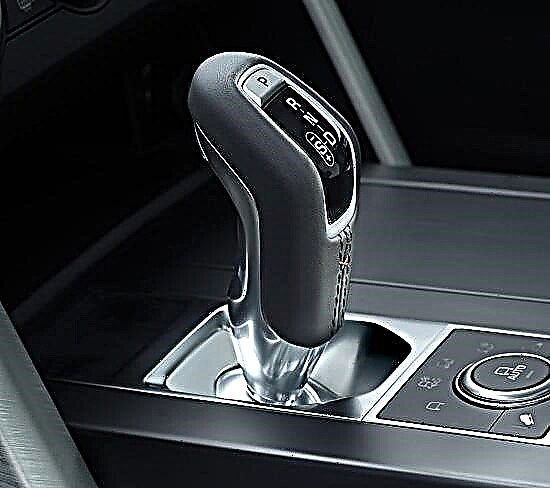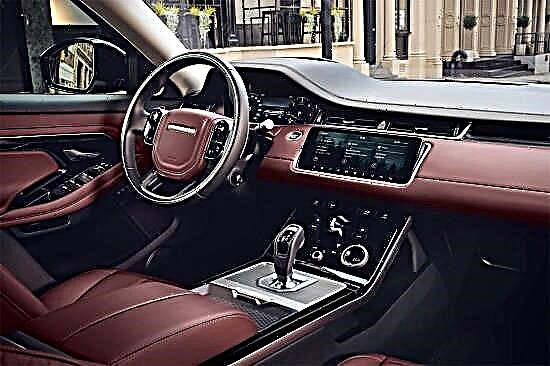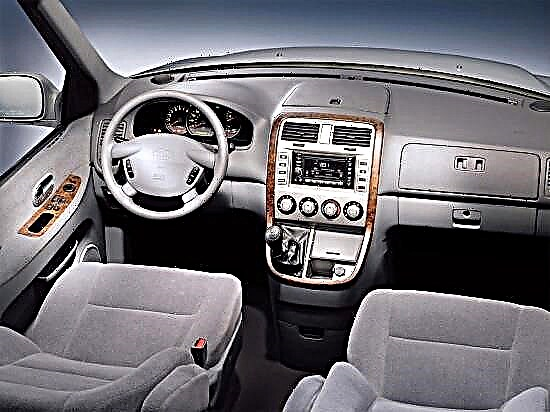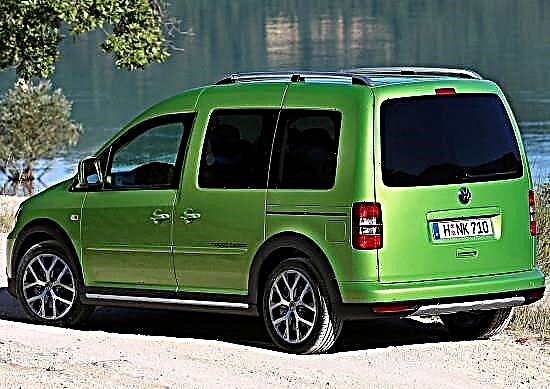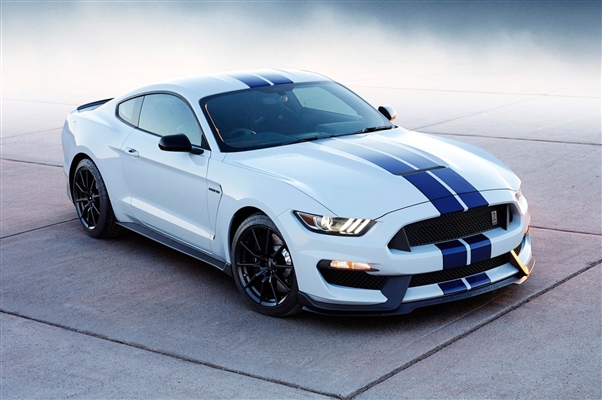Ratings of cars and auto products
Reviews, comparisons & tips for motorists
A responsible motorist knows how important it is to provide high-quality maintenance of components and assemblies of a car, because their resource and safety on the road directly depend on the timeliness of actions, and sometimes proper care becomes a fundamental condition for whether the engine starts or not. Each of the systems has its own purpose, but in general they fulfill one common mission, ensuring comfortable and safe movement. Every screw is important in the design of vehicles, and even more so when it comes to the main components, without which the functioning of the vehicle is impossible in principle, such as the heart of a car, its "health" must be treated with all responsibility, monitoring and maintaining serviceable condition of the power unit.
One of the conditions for the normal functioning of auto systems and mechanisms is the use and timely replacement of special fluids. So, for a power unit, in addition to engine oil, coolant is an equally important maintenance tool. Why is it needed, what antifreezes and antifreezes are, and what is better to use, we will consider.
What are coolants in a car for?
In the design of cars powered by internal combustion engines, liquid cooling systems are used, the task of which is to stabilize the temperature within the appropriate limits and prevent the engine from heating to critical temperatures and overheating. Most of the energy generated from the combustion of fuel is not useful; it is spent on heating the engine and released into the environment. Forced heat removal, implemented by the cooling system, is vital for the engine, because otherwise, after overcoming several kilometers as a result of overheating, it will simply jam and the car will be able to continue the trip only in tow to the nearest car service, where then it will have to spend a lot on repairs.
For functioning, the engine cooling system must be filled with a coolant (antifreeze, antifreeze). The activity of the constituent devices consists in supplying coolant to the heated elements of the engine and removing excess heat from the internal combustion chambers into the atmosphere, which ensures the optimal temperature for the normal operation of the engine in different modes and conditions, which saves fuel, and also increases the power and resource of the engine. In addition to the main function of engine cooling, the cooling system also performs other tasks (cooling the oil, air in the turbocharging system, fluid in the automatic transmission, exhaust gases, etc.).
The choice of refrigerant must be treated with care, since a low-grade, fake or unsuitable coolant can lead to unpleasant, if not irreparable, consequences for the unit. In this case, you should not save money, and replacement is not done very often - the timing depends on the car, its operating conditions and also on the type of cooling medium, properties and quality of the composition. Next, we figure out more specifically what antifreeze or antifreeze is and make the right choice in favor of a tool that is suitable, taking into account the specifications.
What is antifreeze
Fluids that do not freeze at low temperatures are called antifreezes, as the name implies. This is a general concept; special means are used for various purposes, including for internal combustion engines. Antifreeze is also an antifreeze, or rather its kind, and such a separation of liquids takes place only in the countries of the former USSR. This is due to the fact that TOSOL (the name was an abbreviation - "TOS" - "Technology of organic synthesis", the department of the Moscow research institute that worked on the creation of the product, "OL" indicates the presence of alcohols in the composition) was first produced in the Soviet Union in response to foreign cooling means that are not suitable for domestic cars.
By the way, various technical means were produced under the TOSOL trademark, but the popularity of the TM was brought about specifically by the coolers poured into Soviet-made cars, and later the name became a household name, as, for example, in the case of "jeeps". The very name of this creation of the institute, leading development in the field of organic chemistry and technology, was not patented, therefore, today it is used by many domestic manufacturers of coolant, while the formula for the composition of the original Soviet TOSOL, of course, remained in the past. Thus, the origin is exactly what, in essence, antifreeze differs from antifreeze, accordingly it is recommended mainly for use on domestic cars, but modern "antifreezes" can also be used on some foreign cars.
Features of the composition and the meaning of color
The coolant called TOSOL is based on ethylene glycol (alcohol), the composition also includes distilled or deionized water and a set of additives that give additional properties to the product. The difference between the domestic refrigerant in the additives. So, manufacturers use silicates, borates, nitrites, antifoam, etc. - different brands may differ in the ratio of elements, as well as their presence.
In addition, dyes are used, and TOSOL is inherent not only in blue, which is most often found, it can also be red. The pigment, in principle, is not defining the category and functionality of the coolant, there is no standardization for this property, and this applies to both antifreezes and antifreezes. And the liquid is colored to make it easier to determine its level, to identify leaks, and also to judge the state of the coolant and the need to replace it by color changes (the initial color of antifreeze or antifreeze mutates over time, and the more deposits in the power unit, the more intense). Manufacturers often designate products of the line in this way, for visual identification of different groups of liquid, temperature threshold, or even without indication principles. For example, the freezing point of Tosol A-40, painted in blue, is -40 ° C, and that of a similar red, intended for northern conditions, is -65 ° C. Similar products can be painted in different colors, as well as the same pigment is often used for liquids that differ in all other parameters, in addition, one antifreeze of the same brand may differ in color for different consumers.
Color change, darkening of the liquid occurs due to the influence of deposits, which over time lead to wear of the refrigerant. Scale, rust, etc. provoked by the use of a low quality compound or water as a coolant. So, a new coolant, poured into the system, begins to clean it, and the more deposits there are, the more seriously the original color of antifreeze or antifreeze mutates.
Other differences
The function of domestic and foreign-made coolants is the same; moreover, it is not entirely correct to separate them. This is far from the best component composition, but suitable for certain cars. And the difference between antifreeze and antifreeze is in the components that make up the product formulation, and more specifically, in the additives. So, due to the design differences of the engines, it is necessary to use the funds in accordance with the requirements of the automaker, which are indicated in the technical documentation for the car.As for the properties, the qualitative composition of antifreeze based on ethylene glycol is no worse than foreign analogues, and differs from antifreeze only in the percentage of components.
In this case, one should carefully approach the purchase of coolant, because a low-quality product (regardless of the country of manufacture), instead of performing its direct functions, can seriously harm the engine. The freezing point for liquids is similar, while the boiling point of antifreeze is about 110 ° C, and antifreeze is about 120 ° C. With such a small difference, it can play a decisive role in extreme heat. The fact that the coolant has boiled in the car is easy to notice by the abundance of white steam flying out from under the hood. In addition, engine power drops noticeably while fuel consumption increases significantly. Such boiling significantly shortens the life of the unit, and one of the reasons for the phenomenon is low-quality antifreeze (antifreeze), so savings are inappropriate here.
Performance and behavior in different climatic conditions determines the density of the liquid, both antifreeze and antifreeze. It is this parameter, which depends on the concentration of ethylene glycol, that affects the temperature at which the crystallization process begins (pure ethylene glycol will crystallize at about -12 ° C), and the higher the density, the faster the engine cools, but increase it too much when diluted concentrate should not be. The density increases with decreasing temperature, for ethylene glycol it is 1.113 g / cm³, for water this parameter will be 1,000 g / cm³, respectively, mixing liquids will provide the composition with a value somewhere between these indicators. Of course, the parameter will not be exactly the average when mixing 50/50, which is due to differences in the structure and the difference in the sizes of the molecules of these components. The density is indicated by the manufacturer on the packaging, taking into account it, car manufacturers recommend suitable formulations. Moreover, over time, the coolant loses its qualities, and the density also decreases, so this parameter must be controlled, which can be done in various ways, but it is better to use a special device - a hydrometer.
What is antifreeze
The fact that antifreeze and antifreeze are not separate concepts, and also what is the difference between them, we have already highlighted. Contrary to the prevailing stereotype, domestically produced products are not bad, although many manufacturers avoid the very name "antifreeze" due to a common misconception and call their formulations antifreezes, stating that coolant can also be used for foreign cars.
So, antifreeze is the international name for coolants, to which it actually belongs, including antifreeze. At the same time, coolers are subdivided into groups and have technical differences; it so happened in Russia that the Volkswagen nomenclature is often used to identify imported products.
Cooler types
Modern coolants have evolved significantly since the creation of the first antifreezes and the Soviet TOSOL, now they are presented in all varieties, for every taste and color. The component composition of the funds of different generations is very different, the properties of the coolant depend on it.
Ethylene glycol antifreezes are divided into groups according to the composition of the additives:
- Inorganic or "traditional", this is where antifreeze belongs. Inorganic elements act as inhibitors (corrosion inhibitors) in the composition. The service life of this type of coolant is no more than two, after which the properties of antifreeze (antifreeze) begin to be lost.
- Hybrid, containing both organic (carboxylic acid salts) and inorganic inhibitors (usually silicates, phosphates or nitrites). The formulations can serve for about 3-5 years (according to Volkswagen's nomenclature, this includes green antifreezes, designated G11).
- Organic or carboxylate antifreezes are made on the basis of organic acids. These are more improved formulations that organize protection only in places where corrosion occurs, and not in the entire cooling system, unlike the previous generation antifreeze or antifreeze. G12 belongs to the carboxylate group.
- Lobrids ("Lobrid", they can also be called hybrid, but not to be confused with coolant class G11) are today considered the last generation of ethylene glycol antifreezes. Their component composition includes organic corrosion inhibitors and silicon compounds. The fluids are distinguished by an increased boiling point of up to 135 ° C, which allows them to be used on modern engines. The service life can reach 10 years, because the factory filling with this type of antifreeze is designed by the automaker for the entire operational period of the car (this is purple G12 ++, it is closer to G13).
Propylene glycol antifreezes are less common, they are higher in cost, and their performance is similar to lobrid coolant, while the propylene glycol used in the base is non-toxic and more environmentally friendly substance. The G13 class is the pinnacle of modern coolants, with an emphasis on environmental compliance for the sake of modern trends. Antifreeze of this type is often colored with a yellow or orange pigment.
Fluid parameters
In addition to cooling with antifreeze, including antifreeze, other functions are also performed. When choosing a refrigerant, you need to pay attention to the following parameters:
- Boiling temperature. Coolants of different groups operate up to certain temperature limits. So, if the maximum boiling point of antifreeze is approximately 110 ° C, for G11, G12 antifreezes it is about 110-120 ° C, but it may be lower, since the parameter depends on the proportions used in the recipe. Lobrid has a boiling threshold of about 135 ° C, it is preferable to use them in hot climates.
- Freezing temperature. This parameter indicates at what temperature the liquid begins to crystallize. Any antifreeze, antifreeze, the freezing point is lower than that of water, which, when it goes into a solid state, and therefore expands, can lead to rupture of pipes and other damage to the system.
- Anti-corrosion properties. Due to the differences in component compositions, some coolers cover the entire system with a protective film or only the area affected by corrosion, which is already better, since heat transfer will not be disturbed, and the engine will last longer.
- Antifoam properties provided by additives.
- Anti-cavitation properties. Cavitation is a process of formation and collapse of bubbles, it has a destructive effect on the protective film of additives, and together with corrosion, it has a negative effect on the metal. Carboxylate and lobrid antifreezes offer better protection than traditional fluids.
Summarizing all of the above, we note that there is no fundamental difference between liquids of domestic and imported production, in fact, there is only a division into groups, which is due to the peculiarities of the composition and properties of the products. But since there is still a difference between antifreeze and foreign antifreeze in some moments, we will designate the influencing factors:
- The additive package is the main difference between all antifreezes, since the additives determine the properties of the product.
- Operational properties, namely, the indicators of the boiling and freezing temperatures of mixtures in various conditions with varying degrees of load on the power unit.
- Fields of application, that is, cars and engines installed on them, which are suitable for a particular composition due to individual characteristics.
- The quality level of mixtures of different classes and manufacturers.
What is better to use antifreeze or antifreeze
Power units have structurally evolved a lot, have become more powerful and more complex, and modern technologies used in their production dictate what care products are needed for motors. However, the formulas of the compositions do not remain the same either. To the eternal question of what is better to use, antifreeze or antifreeze, the correct answer will be one - the cooler must correspond in all respects to the features of the engine, so the best solution would be to follow the recommendations of the automaker. The car manual clearly states which fluids and other consumables to use for a particular car brand. In addition, one should take into account the climatic features of the region in which the car is operated.
When buying a used car, first of all, you should take care of replacing fluids, while not knowing for certain what exactly was poured into the cooling system and other details from the life of the car, it is better to rinse it and fill it with coolant of a suitable category. When choosing what to pour, antifreeze or antifreeze, in no case should you be guided by the color of the liquid, today the color does not determine the group of coolers and does not indicate the compatibility of products. To add, for example, a refrigerant of the same color to green would be a big mistake, because if you did not guess and their classes are different, then a conflict of additives in this case is guaranteed.
Is it possible to mix different compositions
It is better not to mix chemicals of any origin without proper knowledge, since the consequences can be very different. It is impossible to combine different classes of antifreeze, since as a result of interaction, the formation of solid particles in the liquid is possible, and this will negatively affect the cooling system.
If you mix compositions of the same class, while from different manufacturers, this will not change the characteristics, but there is a risk of an increase in viscosity when heated approaching 100 ° C. So in case of replacing one antifreeze with another, it is still better to flush the system, also replacing the seals and hoses.
Antifreezes belonging to the G12 ++ and G13 classes are universal and compatible with other classes, so that only these compounds can be topped up if necessary.
What is better to fill in: antifreeze or antifreeze
When deciding what to choose, it should be remembered that the main selection parameter is the compatibility of the fluid with the cooling system. Here it is more correct to choose not between antifreeze and antifreeze, but to take into account the class and characteristics of the refrigerant, while the product must be of high quality. Additives in the composition of the funds can be silicate and carboxylate, they are distinguished by the method of protection against corrosion and service life.
It makes no sense to compare classic antifreeze and G11 antifreeze, they are both outdated and far behind the latest generation fluids with organic composition. Traditional refrigerants envelop the cooling system with a protective layer, and such aggressive protection is not entirely justified. However, antifreeze is great for old engines, in whose designs cast iron parts are used. In carboxylate antifreezes, a protective layer is formed in the area of corrosion, which does not interfere with heat transfer, they should be used in the presence of an aluminum radiator (antifreeze or G11 cannot be used here, they will disable the aluminum radiator).
Antifreeze with a high boiling point is best used in hot climates and under heavy loads, the liquid cools the engine better. The latest generation of coolant, of course, is superior to the previous versions and is universal, but the coolant will not be able to improve the engine, so there is no point in using a composition that is much more expensive than antifreeze, for example, on old Zhiguli. It is also necessary to take into account the need to use coolant for a particular car brand.

